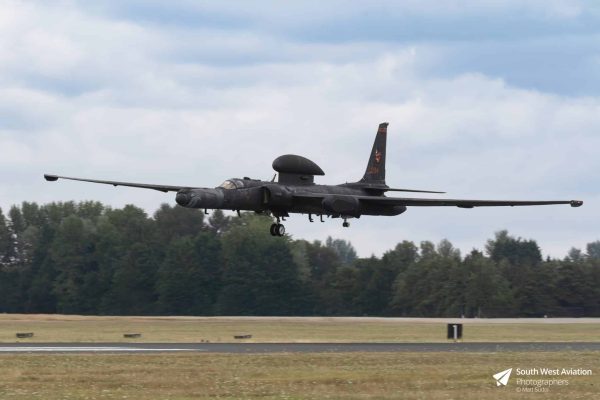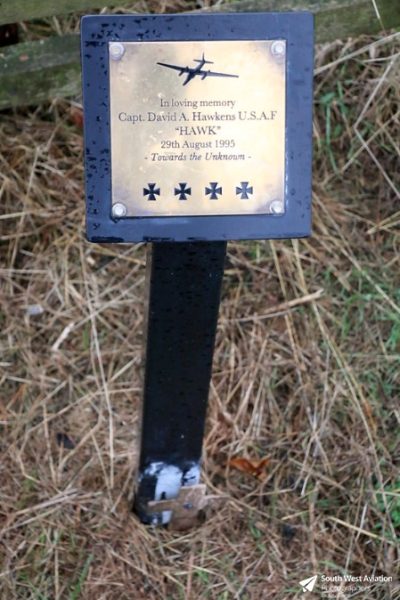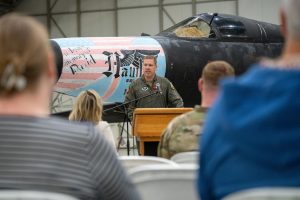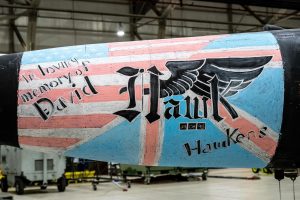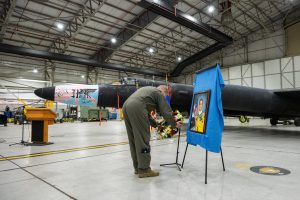RAF Fairford, August 29, 1995 In the quiet morning hours, a Lockheed U-2R reconnaissance aircraft lifted off from the Gloucestershire airbase under the call sign Mooch 31. Its mission: a high-altitude surveillance flight over Bosnia as part of NATO’s Senior Span operations. But within minutes, the flight would end in tragedy, claiming the life of 35-year-old USAF pilot Captain David A. Hawkens and leaving an indelible mark on the U-2 community.
The U-2R, tail number 68-10338, was one of several deployed to RAF Fairford following the closure of Alconbury. These aircraft, known for their extreme altitude capabilities and unforgiving handling characteristics, were instrumental in gathering intelligence during the Balkan conflicts. On that fateful morning, Hawkens’ aircraft departed with a sensor pod mounted above the spine. But as it accelerated down the runway, a critical failure occurred: the port underwing pogo, a detachable support wheel used during takeoff refused to release. With one wing still supported and the other free, the aircraft’s balance was compromised.
Captain Hawkens attempted to return to runway 27 and shake loose the pogo. As he passed the midpoint of the runway, the aircraft stalled. The left wing dropped, struck the tarmac, and broke off. The U-2 veered left, crashed through a power substation, breached the perimeter fence, and bounced across a concrete taxiway. Hawkens initiated ejection, but the aircraft’s low altitude and speed were outside the safe parameters for the U-2’s zero-zero ejection seat. The pilot chute deployed, but the main canopy didn’t fully inflate. Hawkens was found 150 feet from the wreckage and airlifted to Princess Margaret Hospital in Swindon, where he succumbed to his injuries at 09:55.
Captain Hawkens was interred at Arlington National Cemetery, joining the ranks of aviators who gave their lives in service. His memory lives on at RAF Fairford, where a dedicated room in the Community Centre bears his name and portrait. In 2020, a memorial plaque was erected near the Dunfield gate, close to the crash site a quiet tribute funded by local aviation enthusiast Si Blick.
The accident prompted a fleet-wide modification to the U-2’s pogo system, ensuring future detachments would be more reliable. It also served as a sobering reminder of the risks faced by pilots flying at the edge of the envelope.
On Friday 29th August 2025 Personnel from 99th Expeditionary Reconnaissance Squadron, who still operate the Lockheed U-2 from RAF Fairford gathered to honor the memory of “Hawk” with Lockheed U-2S 68-10329 receiving a wrap around chalk nose art to remember the talented aviator. As RAF Fairford continues to support global reconnaissance missions, the story of Captain David Hawkens remains a poignant chapter in its history. He flew alone and unafraid, in an aircraft that demanded perfection. And though his final flight ended in tragedy, his legacy endures— n the lessons learned, the memorials raised, and the quiet respect of those who still walk the flight line.
Article by Matt Sudol, additional imagery provided by USAF TSgt Jessica Avallone
© South West Aviation Photographers 2025

